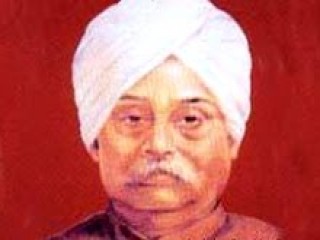
Lala Lajpat Rai biography
Date of birth : 1865-01-28
Date of death : 1928-11-17
Birthplace : Dhudike, Punjab British India (now India)
Nationality : Indian
Category : Historian personalities
Last modified : 2011-09-10
Credited as : nationalist leader, ,
Lala Lajpat Rai was an Indian nationalist leader and was well known for his many publications regarding national problems.
Lala Lajpat Rai was born in the Ferozepore district of the Punjab to a respectable Hindu family. He studied law in Lahore and in 2 years passed the first examination, which qualified him to practice. While a student, he became active in the nationalist and revivalist Arya Samaj Society of Swami Dayananda. Rai joined the Samaj in 1882 and soon emerged as a prominent leader in its "Progressive," or "College," wing. He also taught at the Anglo-Vedic College, run by the Samaj; his fiery nationalism was largely the product of this involvement.
In 1886 Rai moved to Hissar, where he practiced law, led the Arya movement, and was elected to the Municipal Committee (of the local government). In 1888 and 1889 he was a delegate to the annual sessions of the National Congress. He moved to Lahore to practice before the High Court in 1892.
In 1895 Rai helped found the Punjab National Bank, demonstrating his practical concern for self-help and enterprise among Hindus. Between 1896 and 1898 he published popular biographies of Mazzini, Garibaldi, Shivajee, and Swami Dayananda. In 1897 he founded the Hindu Orphan Relief Movement to keep the Christian missions from securing custody of these children. In the National Congress in 1900 he stressed the importance of constructive, nation-building activity and programs for self-reliance.
In 1905 Rai went as a Congress delegate to London, where he fell under the influence of the Hindu revolutionary Shyamji Krishna Varma. Later, in the 1905 Congress session, Rai joined Bal Tilak and Bipin Chandra Pal in support of a militant program around boycott, swadeshi (homemade goods), and swaraj (self-rule for India). In 1906 he tried to play the role of mediator between the moderates and the extremists in the Congress. The following year the Punjab government arrested and transported him without trial to Burma; he was released in time for the 1907 meetings of the National Congress, when Tilak backed him for the presidency. Rai refused to accept the office for fear of a split in the ranks of that body.
Rai lived in the United States from 1914 until 1920. He founded the Indian Home Rule League in New York City and published several important volumes on the Indian problem. Soon after his return to India he was elected president of the Calcutta session of the Congress. In 1925 he entered the Imperial Legislature as a member of the "Swarajist" group. In 1926 he broke with the leaders of the Swarajist group and formed his own "Nationalist party" within the legislature.
In 1928 Rai led the demonstrations against the Simon Commission on Indian constitutional reforms. He was injured by the police in a mass demonstration and died a few weeks later, mourned as a nationalist martyr.
















